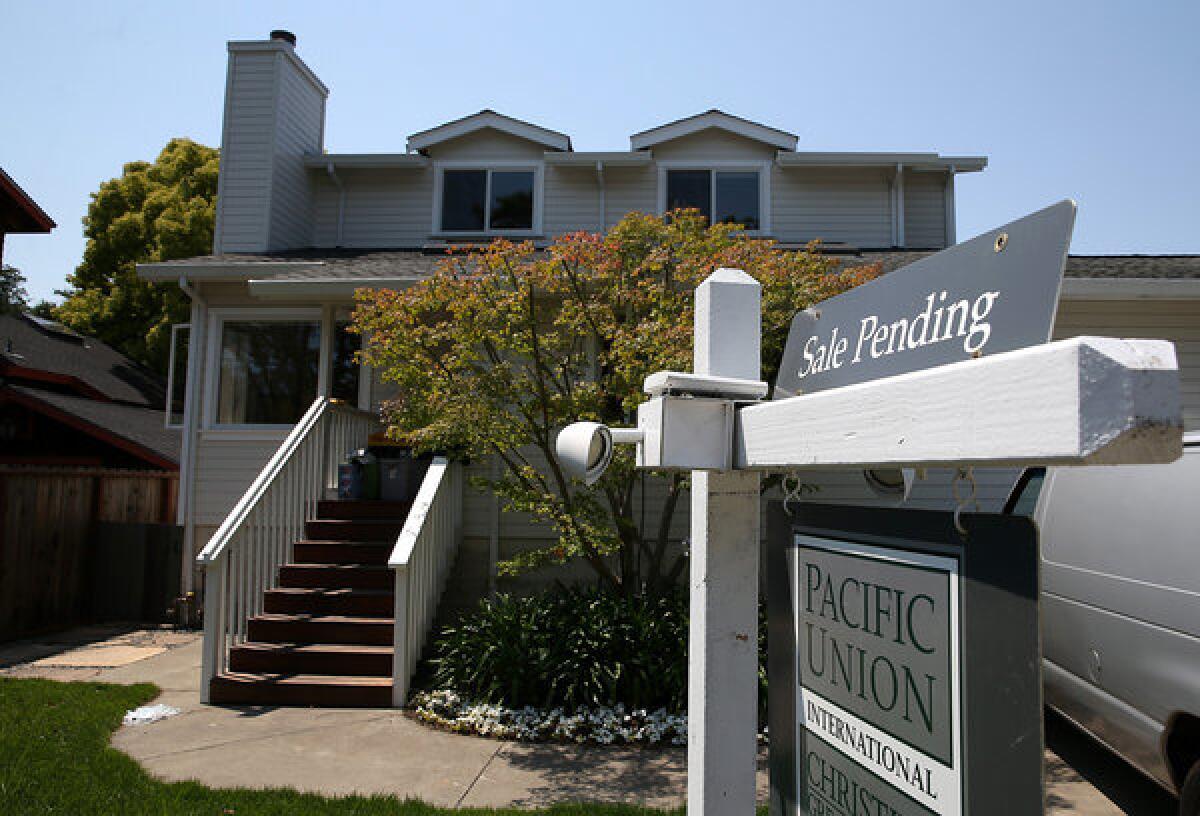U.S. pending home sales drop the most since early 2018

- Share via
Contract signings to purchase previously owned U.S. homes fell in July by the most since early 2018, indicating a pause in buyer interest even against a backdrop of falling mortgage rates, a firm job market and steady income gains.
The National Assn. of Realtors’ index of pending home sales decreased 2.5% from the previous month, data from the group showed Thursday. The median forecast in Bloomberg’s survey called for no change. Compared with a year earlier, contract signings were up 1.7% on an unadjusted basis, the most since early 2017.
Signings decreased in all four regions of the nation, led by a 3.4% drop in the West. Pending sales in the South, the biggest region, decreased 2.4%.
Even with the monthly decline, the index has steadily improved since the end of last year. The cheapest mortgage rates in nearly three years and a jobless rate hovering around five-decade lows hold the potential for further strength in coming months. Recently released July data show contract closings on existing-home sales rose to their highest level since February, and construction starts of single-family dwellings were the strongest in six months.
Pending home sales are often considered a leading indicator of existing-home purchases and a measure of the health of the residential real estate market in coming months.
A separate report out Thursday, on gross domestic product, showed housing construction shrank for the sixth quarter in a row. Residential investment shrank at a 2.9% pace in the second quarter, revised down from an initially reported as a 1.5% drop.
“Super-low mortgage rates have not yet consistently pulled buyers back into the market,” Lawrence Yun, the National Assn. of Realtors’ chief economist, said in a statement. “Economic uncertainty is no doubt holding back some potential demand, but what is desperately needed is more supply of moderately priced homes.”
More to Read
Inside the business of entertainment
The Wide Shot brings you news, analysis and insights on everything from streaming wars to production — and what it all means for the future.
You may occasionally receive promotional content from the Los Angeles Times.










